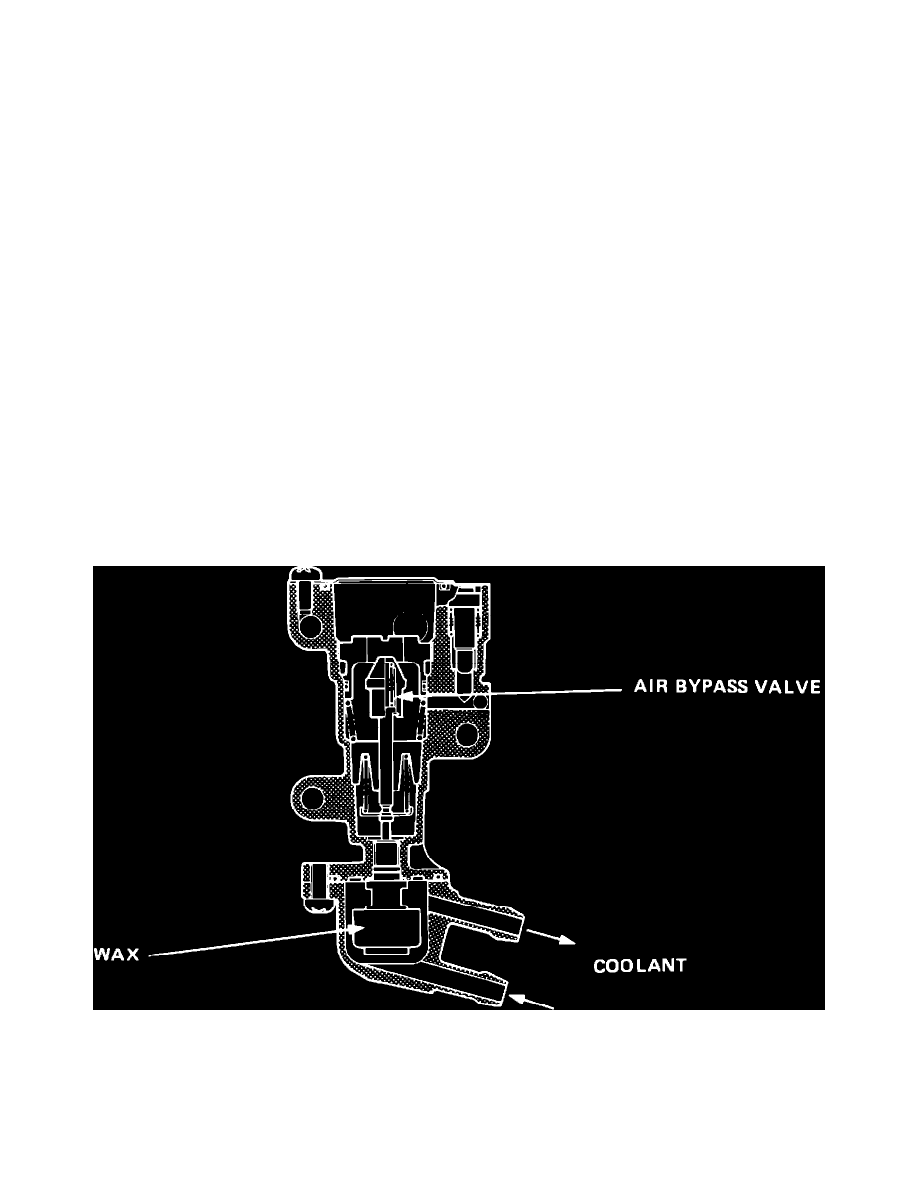Accord L4-1955cc 2.0L SOHC 2-bbl (1986)

A/C Idle Boost Throttle Controller: Testing and Inspection
Carbureted Engine
A/C Idle Control Solenoid Valve
1986 Accord & Prelude
When valve is activated, 9 volts or more should be present between black/yellow (+) terminal and red (-) terminal on control box.
1.
Open control box cover and disconnect rectangular 6 terminal electrical connector from control box.
2.
Disconnect lower hose to A/C idler boost solenoid valve from check valve and apply vacuum to hose. Valve should hold vacuum.
3.
Continue applying vacuum to hose and briefly energize solenoid by connecting battery positive (+) terminal to black/yellow wire terminal on
control box and connect battery negative (-) terminal to red terminal. Valve should not hold vacuum when energized.
4.
If A/C idle boost solenoid valve fails to operate as outlined, valve is defective.
A/T Idle Control Solenoid Valve
Models Equipped W/Automatic Transmission, Exc. 1987-88 Accord & Prelude
9 volts or more should be present between the black/yellow (+) terminal and green (-) terminal of No. 1 control box harness while valve is energized.
1.
Disconnect rectangular 6 terminal electrical connector from control box.
2.
Disconnect vacuum hose No. 23 from vacuum manifold and apply vacuum to hose. Valve should hold vacuum.
3.
Continue applying vacuum to hose and briefly energize solenoid by connecting battery as follows:
a. On 1985 Accord connect battery positive terminal to the black wire terminal on No. 1 control box and battery negative terminal to the
yellow/black terminal.
b. On 1986 Accord and Prelude connect battery positive terminal to black/yellow wire terminal on control box and connect battery negative
terminal to blue terminal.
4.
Valve should not hold vacuum when energized.
5.
If A/T idle control solenoid fails to operate as outlined, valve is defective.
Fast Idle Mechanism
Fig. 9 Typical fast idle mechanism
The air bypass valve is controlled by a thermowax plunger, Fig. 9. When the thermowax is cold, the valve is open. When the thermowax is heated, the
valve is closed. When the engine is cold the valve allows additional air to bypass into the intake manifold so that engine idles faster than normal. When
engine reaches normal operating temperature, the valve begins to close, reducing amount of air bypassing into the intake manifold.
